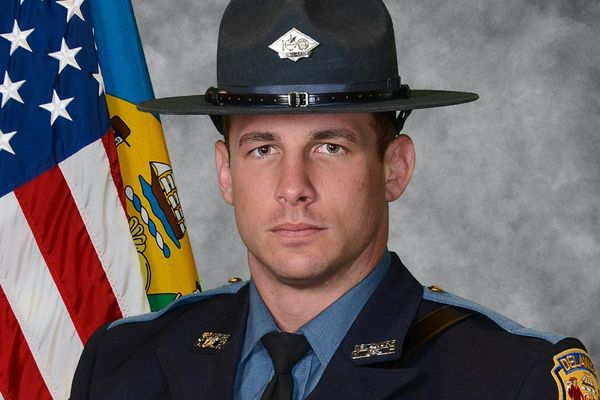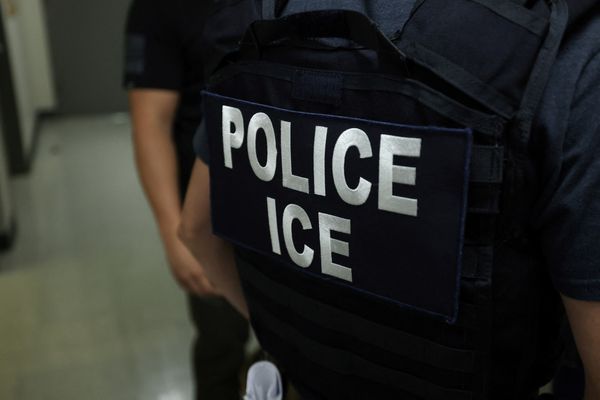
Restrictions introduced to curb the spread of Omicron across Australia’s two most populous states will be eased over the next week as cases continue to drop in New South Wales and Victoria.
The changes, similar across both states, will begin to take effect from Friday. However, the lifting of the indoor mask mandate remains another week away.
In Victoria, from 6pm on Friday, density limits at hospitality and entertainment venues will be removed, dancefloors can reopen and QR code check-ins will no longer be required in retail settings, schools and many workplaces.
In New South Wales, from 12.01am Friday, density limits will be scrapped, QR codes will remain only for nightclubs and music festivals with more than 1,000 attenders, and singing and dancing can resume at venues other than at festivals.
The NSW premier, Dominic Perrottet, also announced the recommendation to work from home would be lifted, returning it to the employer’s discretion. However, masks will still be required until 25 February.
“These changes are measured and proportionate to the circumstances we find ourselves in and are particularly due to the efforts of everybody across our state,” he said.
Victoria has not changed its work-from-home advice, with the state’s premier, Daniel Andrews, telling reporters he expected further restrictions would be eased next week.
“We’re confident that we’ll be able to get to a situation next Friday where masks are off in the office and the advice changes – the advice drops, people will then be free and in fact, we’ll be encouraging them to go back to the office,” he said.
Under the NSW plan, Friday 25 February will see the indoor mask mandate removed except in select venues including public transport, airports, hospitals and aged care facilities.
Masks will still be encouraged in indoor settings where it is difficult to retain a safe distance and for customer-facing retail workers.
Perrottet said he did not want “restrictions in place for any longer than necessary” but would not hesitate to reintroduce measures if the situation changed.
Perrottet also flagged the government could bring forward the resumption of usual weekday train services from 28 February to coincide with the expected uptick in commuters as workers return.
“If we need to make some changes based on the decisions today, we will,” he said.
Non-urgent elective surgery will also return across all NSW public hospitals from next week.
NSW Health deputy secretary, Susan Pearce, asked for patience as the services return due to furloughing of staff, with about 1,800 healthcare workers still off due to infection of isolation.
“It will not occur at the same rate throughout our hospitals,” she said.
Andrews said Victoria’s settings would be “as close as they can be” to those in New South Wales.
“That sense of unity, that sense of consistency has served us well right throughout this summer and we’re keen to keep that going,” he said.
Victoria will keep check-in requirements in place in venues where proof of vaccination is required, including bars, restaurants and cafes, hairdressers, beauticians and other personal care services, as well as some community and entertainment venues.
Health minister Martin Foley said when the density quota was announced on 6 January, only 12.7% of Victorians aged 16 and older had their third Covid-19 vaccine, compared to 52.2% on Thursday.
When dancefloors were closed on 10 January, 818 Victorians were hospitalised with Covid-19 compared to 401 now.
“In relation to the next set of measures, the public health advice is clear that we just need to see the next few days to see this trend stabilise and continue,” Foley said.

Victorian Chamber of Commerce and Industry chief Paul Guerra said while Thursday’s announcement was good news for hospitality operators and nightclubs, a plan was desperately needed for office workers.
“The many CBD businesses that rely on weekday trade from office workers have been screaming out for a signal of when and how they can return, and they continue to languish while the bills mount up,” he said in a statement.
“The Victorian Chamber is encouraging the state government to urgently remove the ‘strong recommendation’ that people work from home, remove the requirement to wear a mask at your desk and fund a voucher stimulus scheme for weekday hospitality and accommodation to help our city, suburbs and regions to roar back.”
Victorian Opposition leader Matthew Guy said the government did not go far enough with the easing of restrictions.
“What Victorians got was the removal of QR codes in settings where the public has already stopped using them, and the continuation of the mask rule that is suffocating our CBD,” he said.
Several other Victorian changes were also announced on Thursday, including that international arrivals will no longer need to obtain a permit to enter the state, and the hotel quarantine period for unvaccinated travellers will be reduced from 14 days to seven days. NSW will also halve the length of hotel quarantine for unvaccinated international arrivals from Monday 21 February.
Hospital worker “bubbles” will be removed, although health services can continue to use them at their discretion, while rapid antigen testing requirements in industries such as meat processing will go from mandatory to “recommended”.
A twice-weekly rapid testing program for school and early childhood staff and students, however, will continue until the end of the term.
Education minister James Merlino said modelling from the Burnet Institute showed the program had prevented 21,000 Covid-19 cases at Victorian schools.
“That modelling shows that will prevent a further 61,000 cases in students and 150,000 cases in the community,” he said.
The government will provide a further 24m rapid antigen tests to schools and early childhood education centres, in addition to 15.6 million tests already provided.
The government will also distribute a further 60,000 air purifiers to schools by 1 June.
Victoria saw 18,825 students and 1,934 teachers infected since the start of the term.
Meredith Peace, the Victorian branch president of the Australian Education Union, said the surveillance testing program, along with mandatory masks indoors for all staff and students in year 3 and above and the rollout of air purifiers, had provided school communities with confidence.
“While we don’t want anyone to get Covid-19, what it is doing is making sure that those people aren’t either at work or school,” she said.
“There are obviously multiple cases in some schools but we haven’t seen any strong evidence of it multiplying over a number of days, when you compare that with what we saw in terms of outbreaks in school communities last year.”







